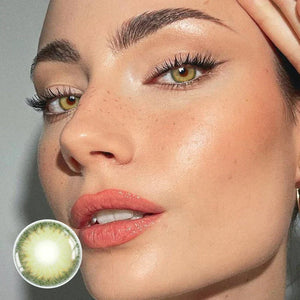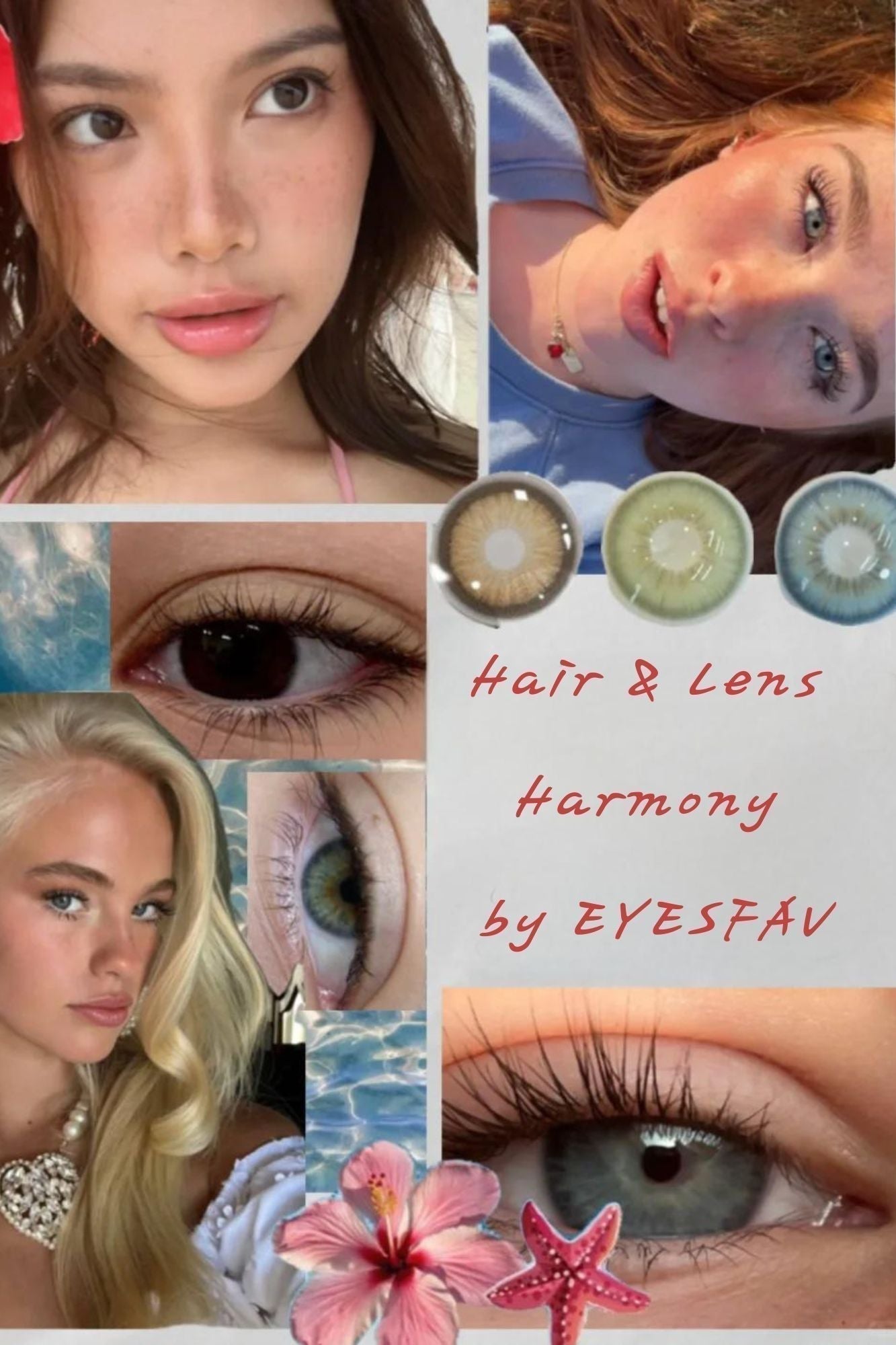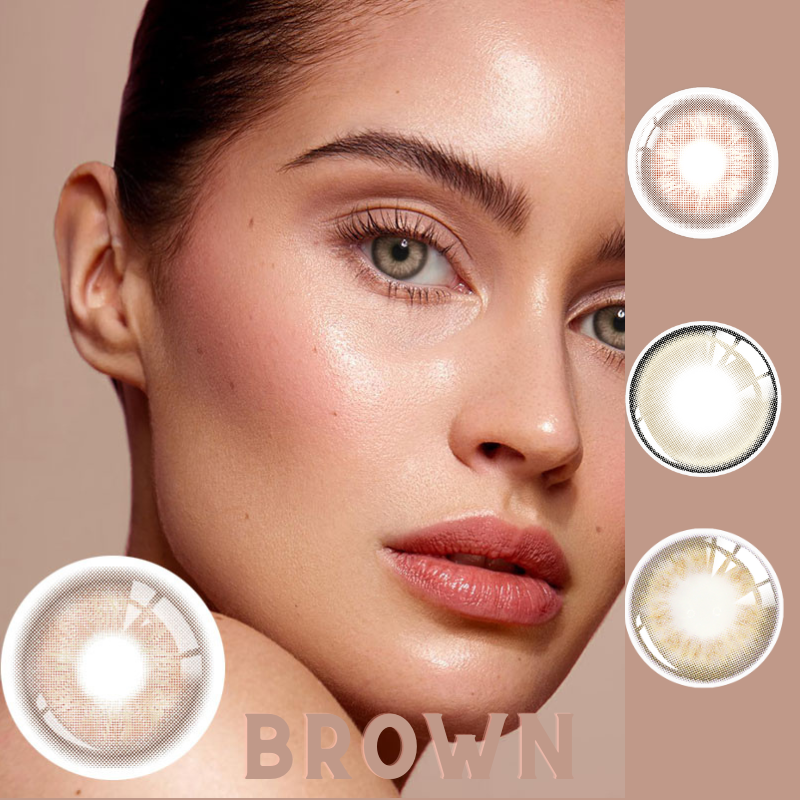Table of Contents:
When it comes to contact lenses, one of the most overlooked but vital aspects is the base curve (BC). It plays a critical role in ensuring your lenses fit properly, which in turn affects both your comfort and vision quality. In this article, we'll explore what the base curve is, why it's important, how it's measured, and answer some common questions that contact lens wearers often have about base curves.

What is Base Curve in Contact Lenses?
The base curve of a contact lens is a measurement that defines how curved the lens is. This curvature must align closely with the shape of your eye’s cornea, the clear front surface of the eye. Measured in millimeters, base curve values for most soft contact lenses typically range between 8.3mm and 9.0mm. The smaller the number, the steeper the curve; the larger the number, the flatter the lens.
You can usually find the base curve value printed on your contact lens packaging or prescription, where it is often abbreviated as BC. It’s important to note that each manufacturer may offer a limited range of base curve options for each lens model, meaning not all contact lenses will have the same available BC values.
Why is the Right Base Curve Important?
The base curve is essential because it ensures that the lens sits correctly on the cornea. Your eyes come in a variety of shapes and sizes, and an improperly fitting contact lens can lead to a number of issues. If the base curve of the lens is too flat for your eye, the lens may slide around excessively or feel loose. On the other hand, if it’s too steep, the lens may fit too tightly, reducing the amount of oxygen that reaches your cornea and causing discomfort or even damage.
In addition to physical discomfort, wearing lenses with the wrong base curve can affect your vision. A poorly fitting lens can move out of place with each blink, leading to blurry or fluctuating vision. Over time, consistent wear of improperly fitting lenses could lead to more serious problems such as corneal abrasions or infections. That’s why selecting the correct base curve is crucial not only for comfort but also for maintaining the health of your eyes.
How is the Base Curve Measured?
Determining the correct base curve for your contact lenses requires a professional eye exam. During the exam, your eye care provider will measure the curvature of your cornea using a device known as a keratometer. This instrument shines a light onto the cornea and measures the reflection to assess its shape. The curvature of your cornea is then used to calculate the most appropriate base curve for your lenses.
In addition to measuring the corneal curvature, your optometrist may conduct a fitting trial. This process involves trying out contact lenses with different base curves to see which one provides the best fit and comfort for your eyes. Even after receiving your lenses, it’s essential to monitor how they feel and function. If you experience discomfort or vision problems, it may be necessary to reassess the base curve and make adjustments.
Adjusting or Switching Base Curves
Even if your base curve was initially perfect, things can change over time. Factors such as age, changes in prescription, and eye shape variations can alter the way your lenses fit. If you notice that your contacts feel uncomfortable, your vision becomes blurry, or you experience dryness and irritation, it might be time to revisit your eye care provider and have your base curve reassessed.
It's also worth noting that switching between different types or brands of contact lenses might require an adjustment in the base curve. For example, if you transition from soft lenses to rigid gas-permeable (RGP) lenses, you may find that the base curve values differ, as RGP lenses typically have a steeper fit to accommodate their rigid structure. Always consult with your optometrist before making any changes to ensure the new lenses fit correctly.
Base Curve in Different Types of Contact Lenses
The base curve measurement is relevant for all types of contact lenses, but the exact value can vary based on the lens type:
Soft Contact Lenses: These lenses are flexible and conform to the shape of your eye. The base curve for soft lenses typically ranges between 8.3mm and 9.0mm, and this measurement works in tandem with the lens diameter to ensure proper fit.
Rigid Gas-Permeable (RGP) Lenses: RGP lenses are more durable and provide sharper vision for some users, but they also require a more precise fit. The base curve for RGP lenses tends to be about 1mm steeper than that of soft lenses because of their rigid nature, which means they don’t conform to the cornea as soft lenses do.
FAQs on Base Curve in Contact Lenses
1. What happens if my contact lenses have the wrong base curve?
If your lenses have an incorrect base curve, you may experience discomfort, blurry vision, irritation, or even eye infections over time. Prolonged wear of poorly fitting lenses can lead to more serious conditions like corneal abrasions, so it's essential to ensure your lenses fit properly from the start.
2. Can I change my base curve without seeing an optometrist?
No, you should never attempt to change your base curve without consulting a professional. The base curve is a critical factor in ensuring your lenses fit well, and altering it without the guidance of an eye care provider can result in discomfort and potential harm to your eyes.
3. How often should I get my base curve checked?
It’s generally recommended to have your base curve reassessed during your annual eye exam. However, if you experience any discomfort, irritation, or vision problems before your next exam, it's wise to schedule an appointment sooner.
4. Can the base curve be different for each eye?
In some cases, yes. While it's relatively uncommon, some people have eyes with slightly different curvatures, requiring different base curve values for each eye. If this is the case, your optometrist will prescribe lenses accordingly.
5. Why do some brands fit differently even with the same base curve?
Different manufacturers may design their lenses using unique materials or methods, which can cause variations in how the lenses fit, even with the same base curve. It’s essential to try on lenses and consult your optometrist to find the brand that fits your eyes best.








